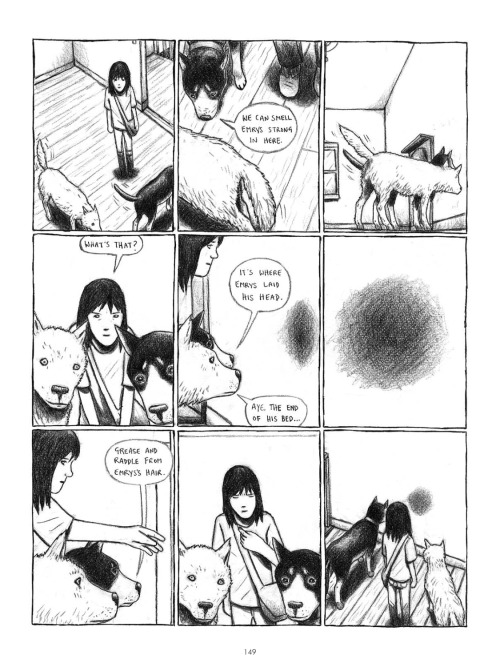Posts Tagged ‘gast’
Comics Time: Gast
October 23, 2014Murder mysteries are defined by their central, structuring absences. A hole occupies the space where a life once lived. That hole can never be filled. But through an investigation of the facts, an uncovering of the truth, and a pursuit and capture of the killer, we can define and discover the shape of the hole to a degree of accuracy sufficient to put a cover on it, so that the still-living may proceed past it once more.
Gast, a graphic novel of exquisite and accomplished empathy and restraint by alternative-comics veteran Carol Swain, tells a story centered on a hole far harder to close up than most. It proceeds with the methods and mechanics of investigation and discovery. The scene of the crime is visited. The victim’s routine is examined. The friends and acquaintances of victim and suspect alike are questioned. Evidence is recovered and cataloged: a discarded make-up bag, a shell casing, a stain on the bedroom wall. Means, motive, and opportunity are all established.
But there is no crime, because killer and victim are one and the same. There is no pursuit, no arrest, no trial, no conviction, because there can’t be. We don’t so much as see the dead person once — not as a corpse, not in a flashback, not in a photograph. All we have is what is learned by a quiet, curious eleven-year-old girl, Helen, a lover of nature and long walks who must piece together even the most basic of facts about the deceased. At first we don’t even know the deceased is a person: Helen is simply told of a “rare bird” who killed himself nearby, and as a Londoner newly arrived in the rural region of Wales where the story is set and unfamiliar with the antiquated expression, she starts her search looking for an actual bird. Like the pages of the ever-present journals, Helen starts with a completely blank slate. Over the course of many long wordless walks and quiet conversations with both her human and, mysteriously, animal neighbors, she slowly fills the tabula rasa with discoveries: suicide, gender dysphoria, the allure and peril of solitude, and the life and death cycle of this farming community and its inhabitants. She learns that most adult of lessons: We each of us have roles we play in the lives of others, shapes we take in their worlds—shapes that can be integral to those lives’ landscape yet still not save us.

